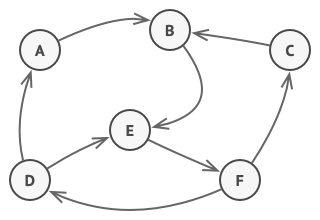
The State pattern is a behavioral pattern that allows an object to alter its behavior when its internal state changes. The pattern encapsulates state-dependent behavior into separate classes, and the object’s behavior changes at runtime by switching between different state objects.
The main idea behind the State pattern is to provide a way to change an object’s behavior without changing its class. Instead of using conditional statements to determine the behavior of an object based on its state, the State pattern uses a set of state classes that encapsulate the behavior and a context object that delegates to the current state.
Example
Here’s an example of the State pattern in Python:
# State interface
class State:
def handle(self, context):
pass
# Concrete state classes
class ConcreteStateA(State):
def handle(self, context):
print("ConcreteStateA handling.")
context.set_state(ConcreteStateB())
class ConcreteStateB(State):
def handle(self, context):
print("ConcreteStateB handling.")
context.set_state(ConcreteStateA())
# Context class
class Context:
def __init__(self):
self._state = ConcreteStateA()
def set_state(self, state):
self._state = state
def request(self):
self._state.handle(self)
# Client code
def client_code():
context = Context()
context.request()
context.request()
context.request()
context.request()
# Usage
client_code()
In this example, we have a State interface that defines the common interface for all the concrete state classes. The State object represents the state of the context object and encapsulates the behavior that is specific to that state.
The ConcreteStateA and ConcreteStateB classes are concrete state classes that implement the State interface. Each ConcreteState object encapsulates the behavior that is specific to that state.
The Context class is the object whose behavior changes as its internal state changes. The Context object maintains a reference to the current State object and delegates to it to handle requests.
When we create a Context object, change its state using the set_state method, and make requests using the request method, we get the output:
ConcreteStateA handling.
ConcreteStateB handling.
ConcreteStateA handling.
ConcreteStateB handling.
As you can see, the Context object’s behavior changes as its internal state changes. The Context object delegates handling of requests to the current State object using the handle method. This example demonstrates how the State pattern can be used to encapsulate state-dependent behavior into separate classes, and the object’s behavior changes at runtime by switching between different state objects.
Pros of the State pattern
- It allows objects to change their behavior dynamically based on internal state changes, without the need for complex conditional statements or branching.
- It encapsulates state-specific behavior into separate classes, promoting code organization and modularity.
- It simplifies the addition of new states, as new state classes can be created without modifying existing code.
Cons of the State pattern
- The number of classes can increase when multiple states are involved, potentially increasing the complexity of the codebase.
- Clients of the State pattern need to be aware of the available states and their transitions, which can introduce additional complexity.
Related design patterns
- Strategy: The State pattern is often considered a variation of the Strategy pattern. While both patterns encapsulate behavior into separate classes, the State pattern focuses on state-specific behavior and allows for dynamic state transitions.
- State Machines: State Machines can be used in conjunction with the State pattern to define and manage state transitions in a more structured and formal way.